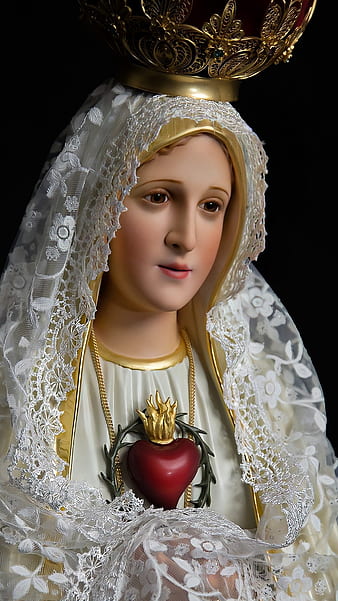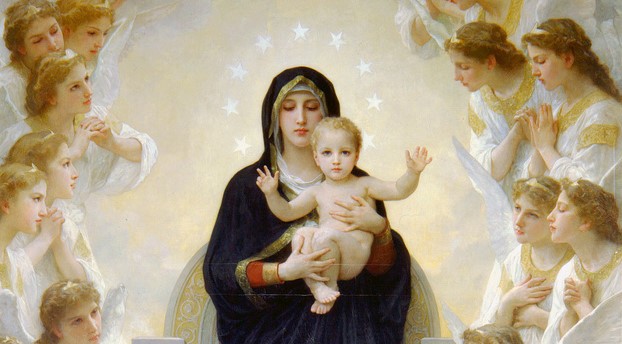Miracles and Marian Shrines: A Theological and Sociological Analysis
This article examines the reported miracles associated with Marian shrines, exploring the underlying sociological and theological frameworks that contribute to their significance. We will define key concepts such as miracle (a divinely caused event defying natural laws), Marian shrine (a sacred site associated with apparitions or significant events relating to the Virgin Mary), and intercession (Mary's role in mediating between humanity and God) to provide a robust understanding of the subject matter. The analysis will draw upon relevant sociological theories, such as the concept of collective effervescence (Durkheim) to understand the shared experience of faith at these sites, and psychological perspectives on faith healing and placebo effects. We will also delve into theological interpretations of Marian apparitions and their place within Catholic doctrine.
The Power of Faith and Collective Belief
Marian shrines are revered centers of Catholic faith, drawing millions of pilgrims annually. Their enduring appeal can be understood through the lens of Durkheim's theory of collective effervescence, which describes the heightened emotional and social energy generated during shared religious experiences. The collective belief in Mary's intercession and the possibility of miracles fosters a strong sense of community and shared purpose among pilgrims. This shared experience strengthens individual faith and creates a powerful emotional context conducive to reported miraculous healings and spiritual transformations. The numerous testimonials of healing and spiritual renewal observed at these shrines support this understanding. Placebo effects, a well-documented psychological phenomenon, also play a significant role in perceived healings; the strong faith and expectation of healing can trigger the body's own restorative mechanisms.
Case Studies: Examining Specific Marian Shrines
Several prominent Marian shrines exemplify these dynamics. Our Lady of Guadalupe in Mexico City, with its iconic image, represents a powerful symbol of faith and national identity, attracting immense pilgrimage. The reported miraculous healing waters of Lourdes, France, have drawn millions seeking physical cures, highlighting the intertwining of faith, expectation, and potential psychosomatic effects. The apparition at Fatima, Portugal, and its associated "Miracle of the Sun," serve as a potent example of mass witnessed events influencing faith and belief systems. Similar collective experiences are reported in Medjugorje, Bosnia and Herzegovina, with its ongoing apparitions, and Knock, Ireland, where the silent apparition provided comfort and solace.
The Role of Prayer and Devotional Practices
The recitation of the rosary, a central devotional practice at many Marian shrines, holds significant importance. This repetitive prayer fosters a meditative state that may contribute to spiritual experiences and feelings of peace and comfort. Further, the Rosary of the Seven Sorrows allows for a focus on Mary's suffering, providing a framework for individuals to connect their own struggles to her experience and find solace in her strength. The fervent prayer and devotion at these sites are viewed as strengthening the potential for divine intervention, leading to reported miracles of healing and conversion.
Intercession, Healing, and Spiritual Transformation
Reported miracles at Marian shrines often involve physical healing, but they frequently encompass emotional and spiritual transformations. The concept of Mary's intercession, as described in Catholic doctrine, frames her role as a powerful advocate mediating between humanity and God. The belief in her ability to intercede profoundly influences the experiences at these shrines, encouraging those who have suffered emotionally, physically, or spiritually to hope for healing and restoration. Reported conversions at Marian shrines further highlight the transformative power of faith and the pivotal role played by Mary's intercession in this spiritual journey.
Pilgrimage as a Transformative Experience
The act of pilgrimage itself constitutes a significant spiritual undertaking. The journey to a Marian shrine provides a time for introspection, prayer, and disengagement from daily life's stressors. This period of focused devotion can contribute to profound spiritual growth, deepening one's relationship with God, and strengthening faith. The social interaction among fellow pilgrims further enhances the transformative impact of pilgrimage.
Conclusions and Recommendations
The reported miracles associated with Marian shrines represent a complex interplay of faith, collective belief, psychological factors, and theological interpretations. While scientific explanations may account for some reported healings, the enduring power of these sites lies in their ability to foster strong community, shared experience, and profound spiritual transformations. Further research could employ mixed-methods approaches, combining quantitative analysis of reported healings with qualitative studies exploring the subjective experiences of pilgrims to gain a deeper understanding of the multifaceted nature of these phenomena. Future studies should also explore the cultural and socio-economic factors that contribute to the popularity and perceived efficacy of Marian shrines across different contexts.
The findings of this analysis suggest that the importance of Marian shrines extends beyond the literal interpretation of miracles. The spiritual and social benefits associated with these sites—including strengthened faith, community bonding, and emotional healing—highlight their significant role in religious practice. These aspects underscore the need for continued theological reflection on the role of Mary in the life of the Church and the psychological and sociological study of faith-based healing and community formation.
Reader Pool: Considering the multifaceted nature of experiences at Marian shrines, how might a more nuanced approach to studying these phenomena incorporate both theological perspectives and sociological/psychological factors to provide a comprehensive understanding?
```





